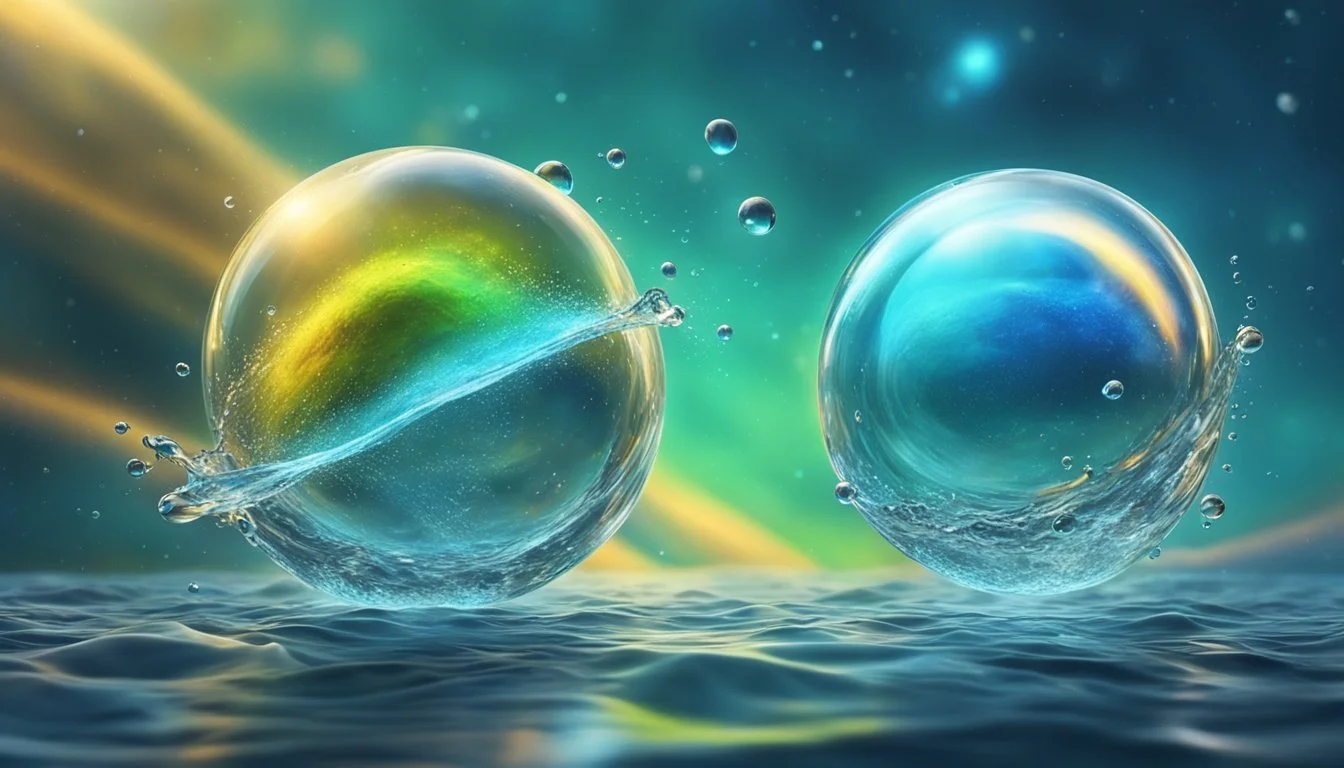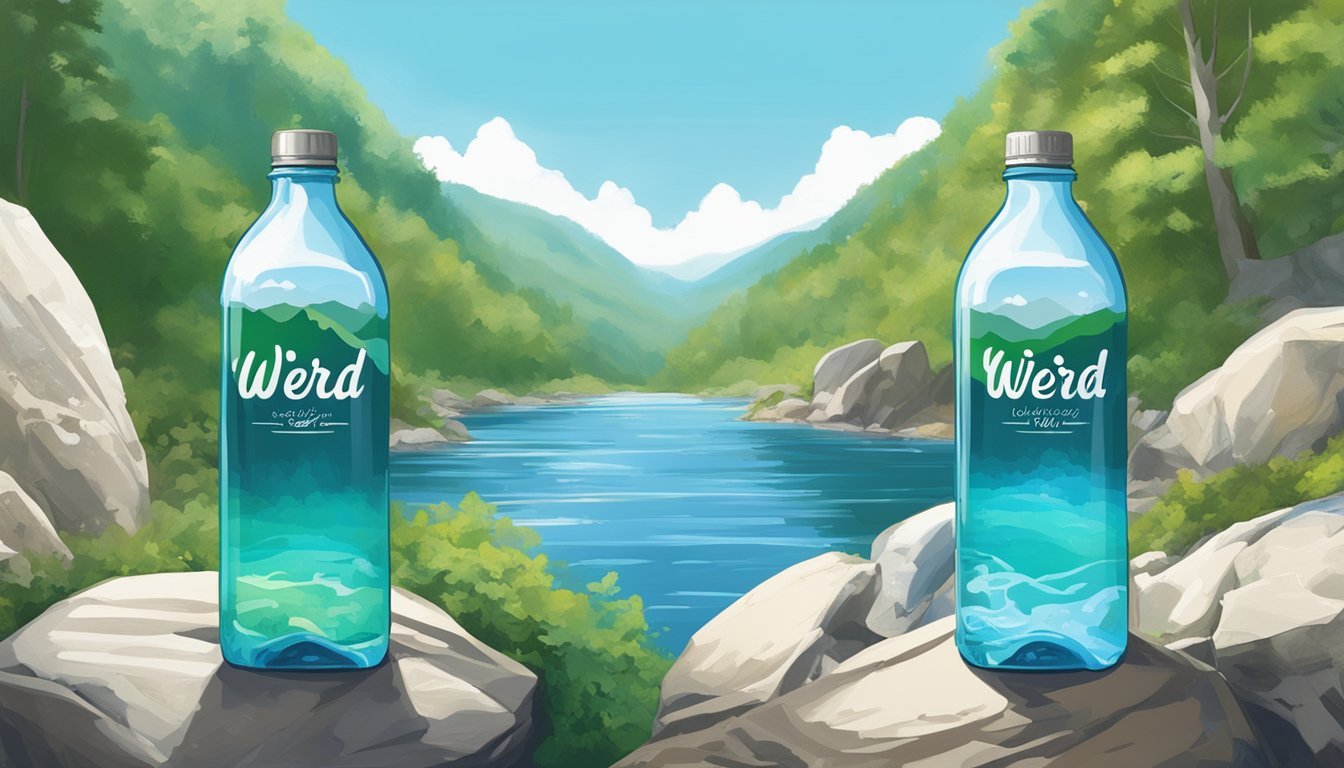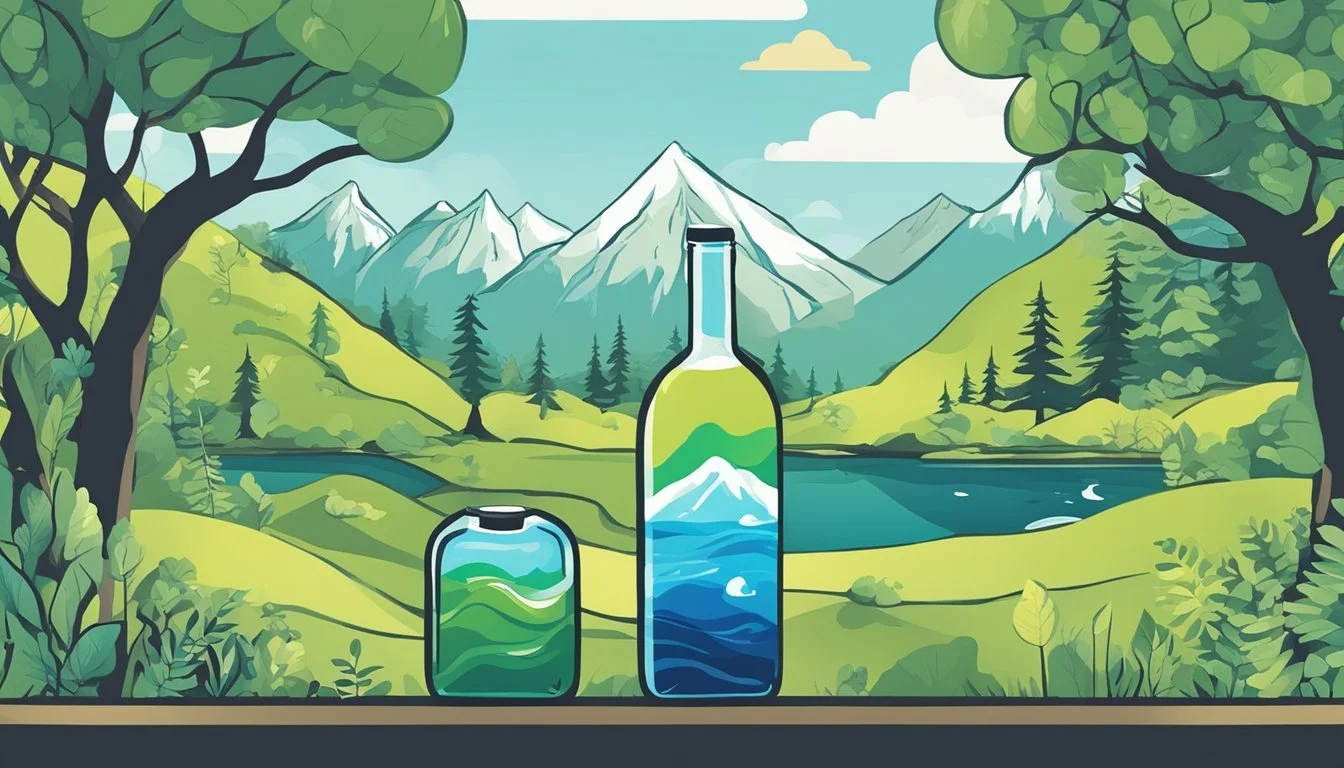Weird Water vs. Pure Life
A Comparative Analysis of Bottled Waters
Choosing the right bottled water can greatly impact your hydration experience and overall health. When it comes to Weird Water and Pure Life, Weird Water stands out with its unique mineral blend, offering a refreshing taste and better nutritional value. Pure Life, on the other hand, is known for its affordability and wide availability but has been criticized for its source and taste.
Weird Water sources its water from natural springs and ensures a rigorous purification process to maintain high quality. This meticulous attention to detail makes it a favorite among those seeking both taste and purity. Conversely, Pure Life often sources water from municipal supplies, which may affect its flavor and mineral content.
For those prioritizing health and flavor in their bottled water choice, Weird Water remains the superior option. While Pure Life offers a convenient and budget-friendly alternative, it may not provide the same level of satisfaction and benefits as its competitor.
The Bottled Water Industry Overview
The bottled water industry is a multibillion-dollar market featuring some of the world's most renowned brands such as Nestlé, Coca-Cola, PepsiCo, and Danone. It has a significant global presence, driven by increasing health and safety concerns over tap water quality.
Key Players and Brands
The industry includes major brands like Dasani, Aquafina, Evian, Fiji, and SmartWater. Coca-Cola's Dasani and PepsiCo's Aquafina dominate the market, providing affordable and easily accessible bottled water options. Nestlé, under labels like Nestlé Pure Life, offers both mineral-enhanced and spring water versions. Meanwhile, Evian and Fiji cater to premium segments, emphasizing their natural spring sources and unique mineral content. SmartWater distinguishes itself with vapor-distilled water and added electrolytes.
Global Presence and Market Forces
The bottled water market spans across continents, with significant growth in regions such as North America, Europe, and Asia. In the U.S., the market size was estimated at USD 44.6 billion in 2023. Globally, the market was valued at USD 303.95 billion in 2022. Growth is fueled by the rise of health and safety concerns related to tap water, driving demand for sanitary packaged goods. Additionally, variations in natural mineral content and unique branding positions further influence consumer preferences.
Health and Hydration
Both Weird Water and Pure Life offer unique health benefits and hydration qualities. Key points in their comparison include the presence of essential electrolytes and overall water quality.
The Role of Electrolytes in Hydration
Electrolytes such as sodium, potassium, calcium, and magnesium play crucial roles in maintaining proper hydration levels in the body. They help regulate nerve and muscle function, balance blood acidity, and maintain fluid balance.
Weird Water is known for its higher magnesium content, which supports muscle health and energy production. Pure Life, on the other hand, focuses on a balanced mix of electrolytes, making it suitable for everyday hydration needs.
Potassium in both waters aids in muscle function and prevents cramps. Calcium supports bone health and may help in maintaining heart function.
Water Quality and Health Benefits
Water quality significantly impacts its health benefits. Pure Life undergoes an extensive purification process that includes reverse osmosis and the addition of minerals, ensuring a clean and consistent taste. This process removes impurities and adds beneficial minerals like calcium and magnesium.
Weird Water sources its water from natural springs, which naturally contains minerals present from the aquifer. This type of water is often praised for its naturally occurring mineral content and taste.
Both brands offer clean, refreshing options that cater to different health preferences, whether you prioritize natural sourcing or a scientifically balanced mineral infusion.
Water Source and Production
The sources and methods used in the production of bottled water significantly impact its taste and quality. Here, we look at how Weird Water and Pure Life differ in terms of their origins and purification processes.
Spring Water and Aquifers
Weird Water sources its water from natural springs and aquifers. These sources primarily rely on underground reservoirs that are fed by rain and surface water seeping through layers of soil and rock. This natural filtration process enriches the water with minerals, giving it a unique taste and character.
Pure Life, on the other hand, predominantly uses municipal tap water, which is then purified. Some of their products may come from protected springs, but the majority originates from treated local water supplies. This approach ensures a consistent and controlled source, but it may lack the mineral complexity of natural spring water.
Purification Processes
Weird Water ensures purity by using minimal processing to maintain the water's natural mineral content. The company employs basic filtration methods to remove impurities while preserving the unique flavors that arise from its natural sources.
Pure Life employs a multi-step purification system that includes reverse osmosis, carbon filtration, and ozonation. Each stage is designed to eliminate contaminants like microorganisms and chemicals, resulting in water that is exceptionally pure. The extensive purification might strip away some minerals, leading to a more neutral taste compared to Weird Water.
Both brands aim for quality and safety, but their differing methods can appeal to a variety of taste preferences and consumer priorities.
Quality and Taste
When choosing between Weird Water and Nestlé Pure Life, two critical factors are their quality and taste. These aspects are influenced by the mineral content and pH levels of the water and the overall sensory experience during tasting.
Mineral Content and pH Levels
Mineral content plays a significant role in defining the quality of bottled water. Nestlé Pure Life is enhanced with a light blend of minerals, including sodium and potassium, which contribute to its flavor. These minerals also support fluid balance and nerve signaling.
Weird Water, on the other hand, may have a unique mineral profile due to its sourcing and processing methods. When examining pH levels, Nestlé Pure Life maintains an optimal range between 6.5 and 8.5, aligning with ideal drinking water standards. Although the specific pH of Weird Water can vary, it typically falls within a similar range, depending on its mineral composition and processing.
The Sensory Experience of Water Tasting
Taste is a subjective yet crucial factor in choosing bottled water. Nestlé Pure Life is often described as having a neutral and balanced taste due to its minimal mineral content. This makes it appealing to a broad audience. Conversely, Weird Water might exhibit a more distinctive flavor profile, potentially influenced by higher mineral content or specific electrolytes.
In blind taste tests, waters like Nestlé Pure Life have ranked variably, sometimes falling into mid-tier categories. This reflects its broad but average appeal. Weird Water’s taste might be more polarizing, attracting those who favor its unique mineral notes. Ultimately, both waters offer distinct tasting experiences, catering to different consumer preferences.
Packaging and Environmental Considerations
When comparing bottled water brands, it's important to examine the types of packaging used and the environmental impact of these choices. Factors such as the materials involved and their sustainability are crucial for making an informed decision.
Plastic Bottles vs. Alternative Packaging
Plastic bottles are the most common form of packaging for bottled water. Both Weird Water and Pure Life primarily use plastic bottles, which are lightweight and cost-effective. BPA-free plastic is often used to avoid potential health risks.
Glass bottles are another option, offering a non-reactive and recyclable alternative, though generally heavier and more expensive. Boxed water has emerged as an innovative solution, utilizing cartons made from renewable resources.
Sustainability and Environmental Impact
The environmental impact involves the entire lifecycle of the packaging. Plastic bottles contribute significantly to pollution if not recycled properly. They are also associated with microplastic contamination.
Glass bottles, while more sustainable in some ways, require more energy to produce and transport. Boxed water typically has a lower carbon footprint and uses environmentally friendly materials, making it a more sustainable choice overall.
In examining both Weird Water and Pure Life, their commitments to reducing environmental impact through eco-friendly packaging innovations and increasing recycling efforts are key considerations for environmentally conscious consumers.
Consumer Choice and Preferences
When choosing between Weird Water and Pure Life, consumers often consider brand reputation and the convenience of access. These factors greatly influence their preferences and trust in the product.
Branding and Consumer Trust
Brand reputation significantly impacts consumer choices. Weird Water is known for its unique marketing approach, focusing on its unconventional sourcing and fun branding. This appeals to a niche market that values novelty. Pure Life, on the other hand, has built its reputation on reliability and wide availability, offering a sense of consistency and trust.
Transparency in sourcing is also crucial. Consumers often prefer brands that provide clear information about their water source and purification process. Pure Life excels in transparency, as it clearly labels its sources, contributing to customer trust.
The Convenience Factor
Convenience plays a key role in decision-making. Pure Life benefits from widespread distribution channels, making it readily available in stores and vending machines. This accessibility adds to its appeal for consumers who prioritize ease of purchase.
In contrast, Weird Water might be found in select stores or specialty shops, appealing to consumers willing to go the extra mile for a unique product. These buyers often appreciate the rarity and exclusivity of their choice.
Convenience also covers packaging options. Pure Life offers various sizes, catering to different needs from single servings to bulk purchases. Weird Water may have more limited packaging options, targeting a different kind of consumer experience.
In-Depth Comparison
This section provides a focused comparison between Weird Water and Nestlé Pure Life, examining key aspects such as quality, purity levels, health implications, and taste.
Weird Water Analysis
Weird Water is known for its distinctive branding and unique water sourcing methods. The company claims high purity levels, filtering the water extensively to remove contaminants while preserving natural minerals vital for health.
In taste tests, Weird Water often stands out due to its slightly alkaline taste, which some consumers find refreshing. The water is tested regularly for safety and quality, ensuring it meets strict standards. Overall, Weird Water positions itself as a premium option, appealing to consumers who prioritize distinctive quality and health benefits in their bottled water choice.
Nestlé Pure Life Evaluation
Nestlé Pure Life is among the most recognizable bottled water brands. The water is sourced from well-protected underground springs and municipal supplies, then purified using advanced filtration processes to ensure safety and taste quality.
Taste-wise, Nestlé Pure Life is often described as neutral, making it a versatile choice for a wide range of consumers. The brand is owned by the largest bottled water corporation in the world, providing a consistent and reliable product. With a focus on accessibility and affordability, Nestlé Pure Life offers a good balance of quality and cost, making it a popular choice in various markets.
Regulations and Safety Standards
Bottled water must comply with specific regulations and safety standards to ensure it is safe for consumer consumption. These standards address contaminants, processing practices, and labeling, distinguishing it from other types of drinking water such as tap water.
Bottled Water Regulations
Bottled water is under the jurisdiction of the U.S. Food and Drug Administration (FDA). Manufacturers must adhere to the Current Good Manufacturing Practices (CGMP) regulations. These regulations cover every step of the production process, from source selection to bottling, ensuring contaminants are limited and the final product remains safe.
In the U.S., bottled water regulations are based on the Federal Food, Drug, and Cosmetic Act (FFDCA). Section 410 mandates that FDA’s regulations for bottled water must be as stringent as the Environmental Protection Agency’s (EPA) regulations for tap water. This ensures both bottled and tap water meet high safety and quality standards.
While public water systems must provide Consumer Confidence Reports (CCRs) annually to their customers, these reports are not required for bottled water. Instead, bottled water must meet specific labeling requirements that indicate the source and any treatment the water has undergone. This difference reflects the distinct regulatory frameworks for bottled and public drinking water.
More About Weird Water
Aqua Carpatica vs Weird Water: Which Bottled Water is Better?
Cascade Mountain vs Weird Water: Which Bottled Water is Better?
Core Hydration vs Weird Water: Which Bottled Water is Better?
Crystal Geyser vs Weird Water: Which Bottled Water is Better?
Hawaii Volcanic vs Weird Water: Which Bottled Water is Better?
Hawaiian Springs vs Weird Water: Which Bottled Water is Better?
Icelandic Glacial vs Weird Water: Which Bottled Water is Better?
Mountain Valley Spring Water vs Weird Water: Which Bottled Water is Better?
Nestle Pure Life vs Weird Water: Which Bottled Water is Better?
Poland Spring vs Weird Water: Which Bottled Water is Better?
Purely Sedona vs Weird Water: Which Bottled Water is Better?
Richard's Rainwater vs Weird Water: Which Bottled Water is Better?
San Pellegrino vs Weird Water: Which Bottled Water is Better?
Solan de Cabras vs Weird Water: Which Bottled Water is Better?
Talking Rain AQA vs Weird Water: Which Bottled Water is Better?
Weird Water vs Kirkland Signature: Which Bottled Water is Better?
Weird Water vs Whole Foods 365: Which Bottled Water is Better?
Whole Foods Italian Still Mineral water vs Weird Water: Which Bottled Water is Better?
More About Pure Life
Cascade Mountain vs Pure Life: Which Bottled Water is Better?
Hawaii Volcanic vs Pure Life: Which Bottled Water is Better?
Hawaiian Springs vs Pure Life: Which Bottled Water is Better?
Icelandic Glacial vs Pure Life: Which Bottled Water is Better?
Nestle Pure Life vs Pure Life: Which Bottled Water is Better?
Pure Life vs Kirkland Signature: Which Bottled Water is Better?
Pure Life vs Whole Foods 365: Which Bottled Water is Better?
Richard's Rainwater vs Pure Life: Which Bottled Water is Better?
Solan de Cabras vs Pure Life: Which Bottled Water is Better?
Talking Rain AQA vs Pure Life: Which Bottled Water is Better?
Whole Foods Italian Still Mineral water vs Pure Life: Which Bottled Water is Better?





